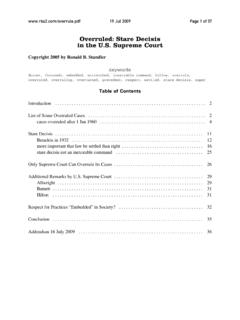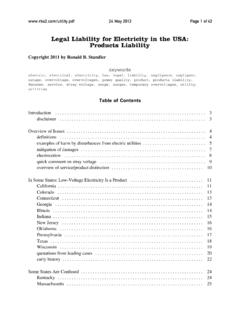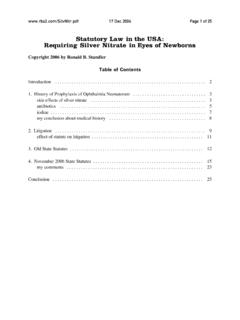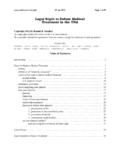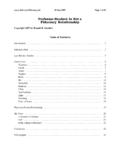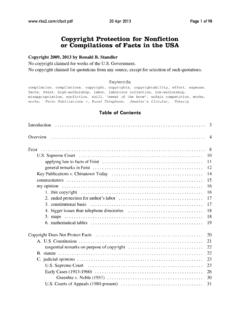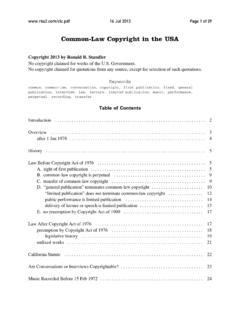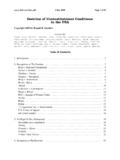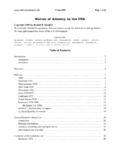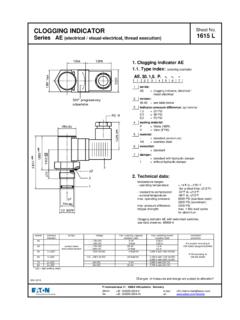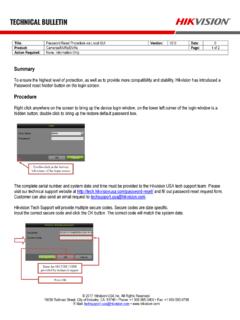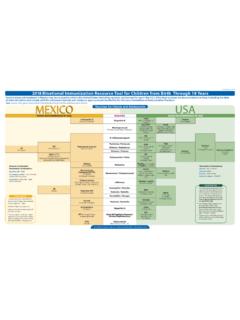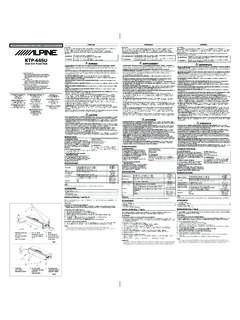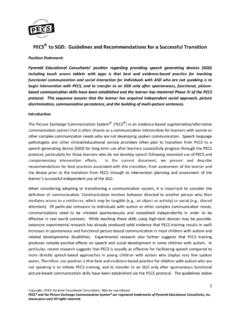Transcription of Tort Liability in the USA for Negligent Weather Forecasts
1 Aug 2003 Page 1 of 49 Tort Liability in the USA forNegligent Weather ForecastsCopyright 2003 by Ronald B. StandlerTable of Contents1. Introduction .. 22. Reported Cases in the USA .. 3 National Mfg. Co. v.. 4 Bartie v.. 7 Chanon v.. 9 Schinmann v.. 10 Brown v.. 11 Bergquist v.. 16 Brandt v. The Weather Channel .. 17 Monzon v.. 19 Taylor v.. 21 Cases in State Courts .. 22 Connelly v. California .. 233. Aviation Cases .. 24 Hartz v.. 25 Ingham v.. 26 Martin v.. 28 Springer v.. 29 Compare land/sea cases with airplane crash cases .. 32no discretion to be Negligent .. 33not a misrepresentation ? .. 34reliance by pilot .. 35inconsistencies .. 3 64.
2 Summary of Current Law .. 38 NWS Policy on Notices About Severe Weather .. 40 View of the Restatements .. 405. Disclaimers .. 436. My Opinion .. 447. Bibliography .. 478. Conclusion .. 48 About the Author .. Aug 2003 Page 2 of 49 1. IntroductionIn September 2002, after reading Millington (1986), I searched the Westlaw online databasefor court cases in the USA involving tort Liability for allegedly Negligent Weather Forecasts . This topic may superficially appear to be specious, for the following three reasons:First, most Weather Forecasts in the USA are prepared by an agency of the Federal Tort Claims Act (FTCA) prohibits Liability for any misrepresentation by employeesof the Government. Furthermore, that Act also prohibits Liability for any discretionaryfunction of the government, which courts have interpreted to include Weather , in general, there is no tort Liability in the USA for negligence in , it is a common perception that Weather Forecasts are neither accurate nor reliable.
3 Thereis no warranty of accuracy in a Weather forecast. In recent years, the National Weather Service hasgiven Forecasts of rain or snow as a probability, rounded to the nearest ten percent, whichemphasizes that the forecast only conveys what might happen, not an absolutely certain prediction. Therefore, a reasonable person would not rely on a favorable Weather forecast as being an absoluteassurance that there will be no dangerous storms. However, perceptions about unreliable forecastsmay be the result of bad experiences during the 1960s and 1970s, not necessarily appropriate formodern Weather Forecasts . And it is possible to have Negligent Forecasts that fail to warn people ofpossible imminent harm ( , tornado, hurricane, flood, lightning, storm at sea with high wavecrests that might capsize boats, etc.)
4 , when the forecasters knew, or should have known, of thepossibility of essay summarizes each of the reported cases and provides a critical review of eachdecision. After reading and considering the reported cases, I am convinced, as explained below,that these cases involve some serious issues and are not specious. The intended audience for this essay about tort Liability for Negligent Weather forecastsincludes: the general public, meteorology students and practicing meteorologists, people interested in either aviation law or maritime law, and attorneys who are interested in information airplane crashes and loss of sailors at sea often involve bad Weather , parts of this essaywill be of interest to airplane pilots and This essay is intended only to present general1 Cases and law involving airplane crashes are discussed below, beginning at page 24.
5 Sailors will find the case of Brown v. , which is discussed below at page 11, of particular Aug 2003 Page 3 of 49information about an interesting topic in law and is not legal advice for your specific problem. See my disclaimer at The Government agency that provides Weather Forecasts was formerly called theWeather Bureau, and since 1970 is called the National Weather Service (NWS). Finally, I have used metric units exclusively in both my professional life and my personal lifesince 1970. However, in this essay I mentionfeet (1 foot = m), [statute] miles (1 mile = km), and knots (1 knot = km/h = m/s), only because those units are used both in public reports of the NWS and in opinions of judges inthe Because I make many long quotations from judicial opinions that contain conventionalAmerican units, it would be jarring if I were to use only metric units in my text, and tediousreading if I were to use both metric and American units.
6 I mention this issue, because I do notwant my colleagues in the scientific community to think I have abandoned my passionatepreference for the metric system of units. 2. Reported Cases in the USAThe following is a summary and critical review of each of the reported cases in the USAinvolving an allegedly Negligent Weather forecast. To be clear, this is not a collection of every courtcase in the USA that involved an allegedly Negligent Weather forecast. Only a few decisions offederal trial courts in the USA are reported, so it is likely that there have been unreported cases onallegedly Negligent Weather Forecasts that were not appealed, and thus produced no reported list the cases in chronological order in the citations in this essay, so the reader can easilyfollow the historical development of a national phenomenon.
7 If I were writing a legal brief, thenI would use the conventional citation order given in the , I present the cases that involve injuries or death to people on land or sailors at sea. Later, I present the cases that involve airplane Aug 2003 Page 4 of 49 Kansas 1951-54 National Mfg. Co. v. Mercantile Co. v. , 111 799 ( 1953) andMid-Central Fish Co. v. , 112 792 ( 1953),aff d sub nom. National Mfg. Co. v. , 210 263 (8thCir. 1954),cert. den., 347 967 (1954).There was a great flood in Kansas City, Missouri in July 1951. A number of plaintiffs suedthe Government and the trial court granted summary judgment to the defendant, Government, in each case. Only two of the summary judgments were reported, in casesknown as Western Mercantile and Mid-Central Fish.
8 Plaintiffs in six cases appealed. The Court of Appeals consolidated the six cases with identical issue into one appellate case,known as National Mfg. National Mfg. Co. is the only opinion in these cases that is now frequently cited, it is ofhistorical interest to read the two reported opinions of the trial courts. Western Mercantile is atrivially terse opinion that the discretionary function exception in the FTCA gives the courtno jurisdiction to hear this case, then makes the gratuitous remark it undoubtedly is a matter ofcommon knowledge that no one in the Kansas City area can accurately forecast either the extent ofprecipitation or floods. 111 at 800. In reading all of the reported cases on allegednegligence in Weather Forecasts , I have found that it is rare for a judge to recognize the lack ofaccuracy in a forecast.
9 Mid-Central Fish is a detailed opinion that recognizes both the discretionary function and misrepresentation exceptions in the FTCA as the basis fordismissing Plaintiff s plaintiffs did not sue the government for damages caused by the flood per se. Instead theplaintiffs alleged that employees of the Government had an obligation to collect informationon the level of water in the river, to forecast rainfall, and to transmit that information to the public whose property and lives might be affected by the flood waters .. 210 at 266. Althoughthe river had entered the flood stage on 9 July 1951, the plaintiffs alleged that the government wasnegligent or careless when it failed to warn people of the impending disaster that occurred on13 July 1951. The plaintiffs also alleged that the Government provided assurances ofsafety , instead of accurate Forecasts .
10 Id. at 267. One plaintiff, Shipley, alleged that if defendanthad so warned plaintiff twenty hours before when such river stage became known to defendant, ..plaintiff could have removed all of its said property to a place of safety and avoided such loss. Id. at 269. The court tersely summarized the essence of plaintiff s Complaints:It was not charged in either of the complaints here that the United States was liable toany of the plaintiffs because the Kansas River overflowed the banks, levees and workswithin which it was normally confined, but the allegations of the complaint in each of theconsolidated cases were limited to the effect that the United States became liable Aug 2003 Page 5 of 49the Weather Bureau and other federal agencies (1) negligently assured the plaintiffsimmediately prior to the flood that the river would not overflow and (2) negligentlyomitted and failed to give the plaintiffs notice and warning of the impending overflow intime for them to remove their movable property from the flood at 269.
